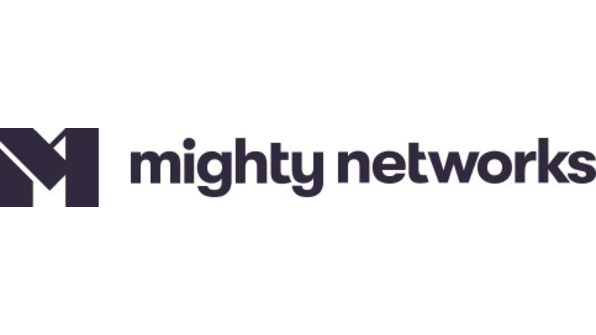If you are a course creator, you are probably aware that there are various types of online courses, each of which serves a different purpose.
A masterclass course seeks to delve into the genius of subject specialists and explore a topic through all lenses, whereas a mini-course helps potential students get an overview of a larger full-sized course.
However, with acohort-based courses, you get something completely different, and this distinction is what has made cohort-based learning so popular today.
Cohort-based courses (CBCs) have grown rapidly since 2020, and we expect them to grow even more in the future. CBCs are getting us ready for the next stage of online education. Cohort-based courses, with a strong emphasis on community and collaborative learning, place a greater emphasis on individual students, and students appreciate this.

What are Cohort Based Courses and how do they work? Gagan Biyani & Neville Medhora
What Are Cohort-based Courses?
In Cohort Based Courses, or CBCs, a student group moves through the same curriculum at the same pace. CBCs typically include a combination of life lessons, remote assignments, and peer learning.
You've probably heard of cohort-based education if you've ever been to school. Cohort learning models are used in schools and universities, where students take the same lecture, assignments, and tests at the same time.
Both share the fact that you do not pay for the quality of the content. Free videos can teach you just as much as attending universities or CBCs. What you pay for is the possibility of finishing the learning path and achieving the desired outcome (e.g., land a job or acquire a specific skill).
What Is The Purpose Of Cohort Learning?
The goal of cohort learning is to provide students with a more structured collaborative learning experience by allowing them to begin and finish a course at the same time.
As a result, cohort-based courses have a set start and end date and are usually only open for enrollment once or twice a year.
This reinforces the notion that the material taught in cohort courses is scarce and difficult to find elsewhere.
Despite the fact that there is a lot of content that is freely available on the web, cohort courses are typically taught live, offer well-researched high-quality content, and learners have timely access to it.
Students feel guided by an instructor who is knowledgeable about the subject, students feel like they are participating in a college seminar that offers the direction they need, and the opportunity to discuss and reflect.
Cohort-based Courses Examples
Mighty Networks
The Mighty Networks Community DesignMasterclass is an online course that teaches students how tostart and grow an online community, including how to structure it for engagement, attract paying members, and what content you need before going live. It is taught live and in cohorts, but there is also the option of self-paced learning.
Stanford
The MBA Program at Stanford University: This traditional university course brings together a cohort of students for classes, seminars, and projects related to earning their Master's in BusinessAdministration. It includes both online and in-person components.
Qpractice
This community brings together aspiring interior designers in cohorts to study for the NCIDQ exam, which is required for the majority of practicing interior designers in North America.
What Is The Difference Between Cohort-based Courses And Self-paced Courses?
The time-bound nature of a cohort-based course, as well as the fact that students master the material together, distinguishes it from a self-paced course in which students can consume the course material alone and participation in a course community is optional.
Because a cohort of students begins and ends the course at the same time, they all progress through the lessons at the same rate. As a result, a cohort provides a more interactive, immersive experience for students, with course participants sharing their own understanding and application of course material with one another as they progress. A cohort increases the likelihood that students will complete a course and apply the material successfully.
In contrast, a self-paced course allows students to begin, pause, and complete the material on their own time and schedule. They could be on lesson one while another student is halfway through the curriculum. In a cohort-based course, this does not occur.
While self-paced courses are more accessible to people regardless of geography, they also have a lower completion rate by students and a lower likelihood that a course participant will successfully consume and apply the material.
A cohort-based course variation provides the option for self-paced learning, assuming that some students in the same cohort will need to miss a class or a discussion here and there. A completely self-paced course, on the other hand, is not, by definition, a cohort-based course.
Why CBCs Are Better Than MOOCs?
Socrates tutored two students at a time; a MOOC scaled learning to 100,000 students. With CBCs, the teacher-student ratio rises, and relationships once again take center stage in the learning process.
If you want to master a skill, having access to instructors will help you stay on track.
According to one study, interaction with instructors has a direct impact on MOOC learner retention. CBCs use online tools such as Zoom or Slackto provide feedback and assist students in completing the course.
This is supported by Seth Godin's altMBA, a cohort-based online MBA with a 96 percent completion rate. According to other CBCs, the completion rate can reach up to 85 percent.
Building relationships with instructors and peers, combined with the time constraint, is a good way to force yourself to finish a course. More specifically, teacher-student and student-student touchpoints, you’re more likely to hold yourself accountable.
How You Can Distinguish Average From Great
Consuming content does not result in the acquisition of information and knowledge. Instead, learning is a three-step process in which you acquire, encode, and retrieve information.
Learning by doing is far more effective than watching. When selecting a course, consider whether the curriculum design will assist you in achieving your desired outcome. Here are some key features to look for:
- Structured access to a subject-specific community.
- Evidence-based learning design, e.g., spaced repetition features and testing mechanisms.
- Assignments that are directly linked to your desired skill.
- Real-time feedback on learning progress.
People Also Ask
How Do You Create A Cohort Course?
Emphasizing the importance of collaboration is a critical component of developing a cohort-based course. A cohort, as opposed to a self-paced course in which members work through pre-made lessons on their own time, is focused on helping people solve problems as a group.
What Is A Cohort Study In College?
Simply put, an academic cohort is a group of students who are enrolled in the same program, progressing through the same academic curriculum, and completing their degree at the same time.
What Are The Advantages Of Cohort Study?
The ability to study multiple outcomes associated with a single or multiple exposures in a single study is a significant advantage of the cohort study design. The combined effect of multiple exposures on the outcome can also be calculated. Cohort study designs also allow for the investigation of uncommon exposures.
Conclusion
Cohort courses are gaining traction and are expected to be the next big thing in online education, with a focus on community, accountability, interaction, and making a real difference. The path forward is to abandon MOOCs and course marketplaces in favor of the power that course platforms like LearnWorlds can provide.



